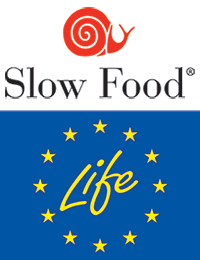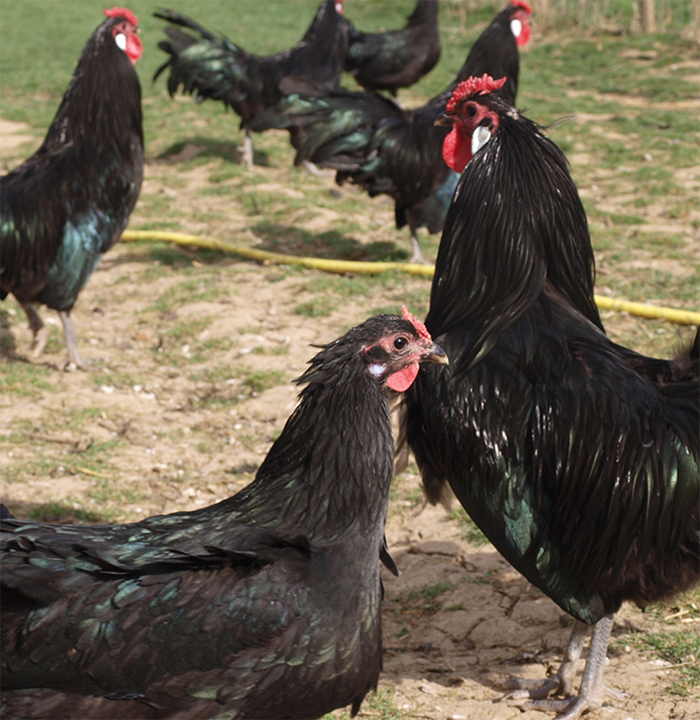What is the solution?
Using local, small-scale farming techniques to raise and preserve a local, typical poultry breed.
This solution improves our resource security in the food category.
How does it #MoveTheDate?
Local, small-scale production of the Alsace Black Chicken – the most typical poultry breed from the northeast of France – has a carbon Footprint approximately 50% lower than the world average.
How is it scalable?
Most global meat is produced at scale, using profitable breeds, with mechanized production methods which require either significant amounts of land and/or resources. There is therefore a large potential to transition production to more sustainable methods which rely on local breeds.
What is the solution?
Using local, small-scale farming techniques to raise and preserve a local, typical poultry breed.
This solution improves our resource security in the food category.
How does it #MoveTheDate?
Local, small-scale production of the Alsace Black Chicken – the most typical poultry breed from the northeast of France – has a carbon Footprint approximately 50% lower than the world average.
How is it scalable?
Most global meat is produced at scale, using profitable breeds, with mechanized production methods which require either significant amounts of land and/or resources. There is therefore a large potential to transition production to more sustainable methods which rely on local breeds.
 The slow-growing Alsace Black Chicken is the most common poultry breed from the region of northeast France near the border of Germany. After the Second World War, the Alsace Black Chicken’s survival was threatened by the introduction of more productive breeds, like the Anglo-American Sussex, Plymouth, and New Hampshire. The breed owes its revival to a small group of amateur and professional farmers who joined together in 2009 in the Association des Éleveurs de Race Poule d’Alsace (AERPA).
The slow-growing Alsace Black Chicken is the most common poultry breed from the region of northeast France near the border of Germany. After the Second World War, the Alsace Black Chicken’s survival was threatened by the introduction of more productive breeds, like the Anglo-American Sussex, Plymouth, and New Hampshire. The breed owes its revival to a small group of amateur and professional farmers who joined together in 2009 in the Association des Éleveurs de Race Poule d’Alsace (AERPA).
Starting in 2013, Italy-based INDACO2 began its collaboration with the Slow Food Presidium project to assess the environmental impact of the Presidum’s products. Using a Life Cycle Assessment (LCA) methodology, INDACO2 assessed the impact of one of the Presidium poultry producers, Gilbert Schmitt. His farm, based in Bischoffscheim, Alsace France, rears approximately 1,200 free-range Alsace Black Chickens per year.
By giving market value to this breed, this solution has helped safeguard the local cultural and gastronomic heritage and, with the help of the Béchanne selection center, brought the population of Alsace Black Chickens back to approximately 3,000 birds in 2014.
According to the data provided to us, the Carbon Footprint of one kilo of Alsace Black Chicken meat is approximately 10% lower than the European average and nearly 50% lower than the world average.
More details about the assessment are available in the Analysis of the Life Cycle and Carbon Footprint of Slow Food Presidium Products report.
*The responsibility for correctness of data used to calculate this result lies with INDACO2. Only the carbon Footprint component of the Ecological Footprint was considered in this calculation. Results may differ if recalculated with data for all Footprint components. The feasibility of substituting all global consumption of this product with the alternative product outlined on this page was not investigated as part of this study; additional research is needed to fully understand the extent to which each alternative product can be replicated and scaled up.
Funded by the European Union. Views and opinions expressed are, however, those of the author(s) only and do not necessarily reflect those of the European Union or CINEA. Neither the European Union nor CINEA can be held responsible for them.
There’s no benefit in waiting!
Acting now puts you at a strategic advantage in a world increasingly defined by ecological overshoot. Countless solutions exist that #MoveTheDate. They’re creative, economically viable, and ready to deploy at scale. With them, we can make ourselves more resilient and #MoveTheDate of Earth Overshoot Day. If we move the date 6 days each year, humanity can be out of overshoot before 2050.

